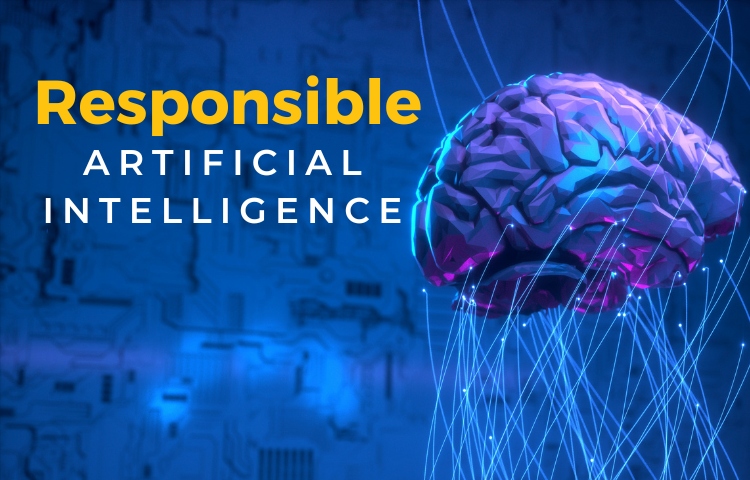

Prefer to listen instead? Here’s the podcast version of this article.
Imagine a bustling healthcare organization where the seamless integration of artificial intelligence (AI) promises to revolutionize patient care. In this hypothetical scenario, AI algorithms analyze vast troves of medical data with lightning speed, offering insights that could predict disease outbreaks, tailor treatment plans to individual patients, and, ultimately, enhance overall health outcomes. It’s a vision brimming with potential to transform the healthcare landscape, but it also raises profound ethical questions and concerns in the form of patient privacy, fairness, and safety hanging in the balance. In such a complex and rapidly evolving landscape, navigating the ethical terrain of AI demands more than just good intentions; it requires a robust framework that can guide organizations through the myriad of challenges and opportunities that lie ahead.
Enter the National Institute of Standards and Technology (NIST) AI Risk Management Framework (AI RMF). Like a seasoned navigator charting a course through uncharted waters, the AI RMF provides a structured approach to managing the risks associated with AI deployment across industries and use cases. It offers a roadmap for organizations to identify, assess, and mitigate the potential ethical, technical, and societal risks inherent in AI systems.
In this article we unwrap the essence of the AI RMF, offering crystal-clear insights, practical strategies, and visionary perspectives on walking the tightrope between innovation and ethical responsibility in the AI landscape.
What is the AI Risk Management Framework?
The AI Risk Management Framework (AI RMF), released by the National Institute of Standards and Technology (NIST) in January 2023, offers a path to minimize potential negative impacts of AI systems, such as threats to civil liberties and rights, while also providing opportunities to maximize positive impacts. Addressing, documenting, and managing AI risks and potential negative impacts effectively can lead to more trustworthy AI systems. Some key points to consider include:
What is an AI Risk?
AI risks encompass a wide range of potential challenges and concerns associated with the development, deployment, and use of artificial intelligence systems. Here are some key aspects of AI risk:
Attributes of Trustworthy AI Systems
In order to manage and mitigate these risks, the AI RMF outlines several attributes of trustworthy AI systems. Let’s explore each attribute in detail and understand its significance in fostering ethical AI deployment:
How to Apply the Framework
The AI RMF also provides a structured approach to managing risks associated with artificial intelligence (AI) systems. Its core functions serve as the foundation for responsible AI development and deployment. The NIST has meticulously outlined recommended actions for enhancing each of the attributes of AI trustworthiness in its Playbook, providing a structured path for organizations to ensure their AI systems meet critical ethical and operational standards. Let’s delve into these core functions of the framework:
1. Govern: Charting the Course of Ethical AI
Effective governance is the North Star guiding organizations toward ethical AI practices in the vast expanse of AI exploration. Like skilled navigators, organizations establish policies, guidelines, and oversight mechanisms to ensure that their AI initiatives align with organizational values, legal requirements, and ethical norms. Effective governance promotes transparency, accountability, and responsible decision-making and sets the course for ethical AI development and deployment.
2. Map: Navigating the AI Landscape
In the intricate maze of AI systems, mapping is the compass guiding organizations through the labyrinth of dependencies and vulnerabilities. By understanding the AI landscape, organizations identify stakeholders, assess risks, and create a comprehensive view of their AI systems. Mapping involves charting AI components, data flows, dependencies, and potential vulnerabilities, empowering organizations to make informed decisions and prioritize risk mitigation efforts.
3. Measure: Gauging the Depth of AI Risks
As organizations navigate the waters of AI, measuring AI risks is akin to taking soundings to gauge the depth of potential hazards. By quantifying and assessing various dimensions, organizations evaluate the impact of AI on privacy, security, fairness, and other critical factors. Using metrics, benchmarks, and performance indicators, organizations track AI system behavior, compliance, and effectiveness. Regular assessments enable continuous improvement and risk reduction, ensuring that AI systems remain trustworthy and aligned with organizational goals.
4. Manage: Steering Clear of Ethical Shoals
In the ever-changing seascape of AI, effective risk management is the rudder guiding organizations away from ethical shoals. By implementing risk mitigation strategies, monitoring AI systems, and responding to emerging threats, organizations navigate the complexities of AI with confidence. Managing AI risks involves incident response planning, adaptive risk management, and ongoing evaluation, ensuring that AI systems remain trustworthy and aligned with organizational goals.
Takeaways
In the absence of laws or formal regulations governing AI development and deployment in the United States, the AI Risk Management Framework (AI RMF) emerges as a critical reference point for organizations navigating the complexities of AI. As technology advances at a rapid pace, the ethical and responsible use of AI becomes increasingly vital. By adhering to the principles outlined in the AI RMF—Govern, Map, Measure, and Manage—organizations can approach the development and deployment of AI systems with confidence and integrity. As technology evolves, so will the framework. However, with this framework as their guide, organizations can navigate the ethical frontier of AI, ensuring that innovation is tempered with ethical considerations and that societal well-being remains at the forefront of AI advancement.
WEBINAR